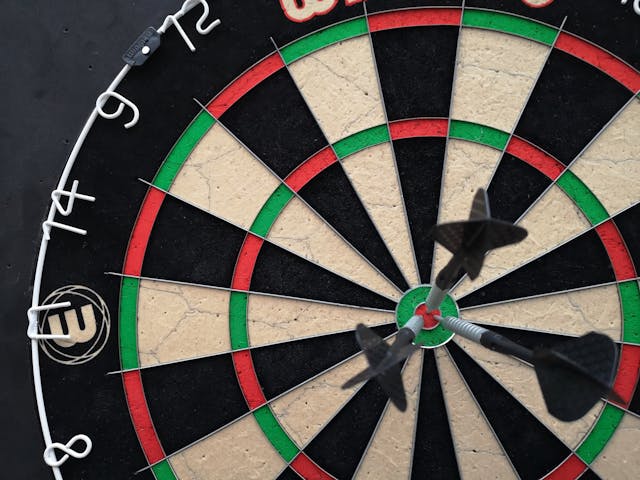Hello and thank you for visiting GertieBlu! Today, we’re exploring a game that combines skill, strategy, and a touch of luck—darts. Whether you’re eager to impress your friends at the pub, add a new activity to your game night, or simply challenge yourself, darts is a fantastic choice. Let’s break down everything you need to know to get started.
What is Darts?
Darts is a game where players take turns throwing small, pointed missiles (darts) at a circular target known as a dartboard. The aim is to hit specific areas of the board to accumulate points, with the ultimate goal depending on the variant of the game you’re playing. Darts can be played casually with friends or more competitively in leagues and tournaments.
Understanding the Dartboard
The dartboard is divided into 20 numbered sections, each with a different point value, ranging from 1 to 20. The board is further segmented into:
- Outer ring: Doubles the point value of the section hit.
- Inner ring: Triples the point value of the section hit.
- Bullseye: The center of the board, worth 50 points (inner bullseye) and 25 points (outer bullseye).
- Outer bull: Worth 25 points.
Getting Started: What You Need
Before you start playing darts, you’ll need:
- Dartboard: A standard dartboard is 18 inches in diameter and divided into 20 sections.
- Darts: Darts are typically made of metal and have a pointy tip, a barrel for grip, and a flight for stability.
- Throwing Line: Also known as the “oche,” this is where players must stand behind when throwing darts. The oche is usually 7 feet 9 ¼ inches from the board.

Basic Rules of Darts
There are many variations of darts, but the most common game is 501. Here’s a quick overview of how it’s played:
- Starting the Game: Each player starts with a score of 501 points.
- Scoring: Players take turns throwing three darts per round, aiming to reduce their score to exactly zero. Points are subtracted from the player’s total based on where their darts land on the board.
- Doubling Out: To win, a player must reach exactly zero by hitting a double (the outer ring) or the bullseye with their final dart. If a player goes below zero, their score for that round is invalid, and their score reverts to what it was at the start of the turn.
Tips for Improving Your Game
- Practice Your Grip: Find a comfortable way to hold the dart that gives you control and accuracy. Experiment with different grips until you find what works best.
- Perfect Your Stance: Your feet should be firmly planted, with your dominant foot forward. Keep your body still, and let your arm do the work.
- Focus on the Release: A smooth, consistent release is key. Try not to flick your wrist or overthink the throw—just let it flow naturally.
- Aim Small, Miss Small: Focus on a small target within the section you’re aiming for. The smaller your target, the more accurate your throws will be.
Popular Variations of Darts
- Cricket: Players aim to “close” numbers 15-20 and the bullseye by hitting each three times. The goal is to close all numbers and have the highest score.
- 301: Similar to 501, but players start with 301 points. This game also requires a double to start scoring.
Why Play Darts?
Darts is more than just a game—it’s a social activity that sharpens your hand-eye coordination, improves focus, and encourages friendly competition. It’s easy to learn, but challenging to master, making it the perfect game for both beginners and seasoned players.

Final Thoughts
Whether you’re playing casually with friends or taking your first steps into competitive play, darts offers endless fun and excitement. It’s a game of precision, patience, and practice—and anyone can play. So grab your darts, step up to the oche, and aim for the bullseye. Happy playing!
Thanks for stopping by GertieBlu. Stay tuned for more game guides, tips, and tricks. Until next time, keep those darts sharp and your aim sharper!









